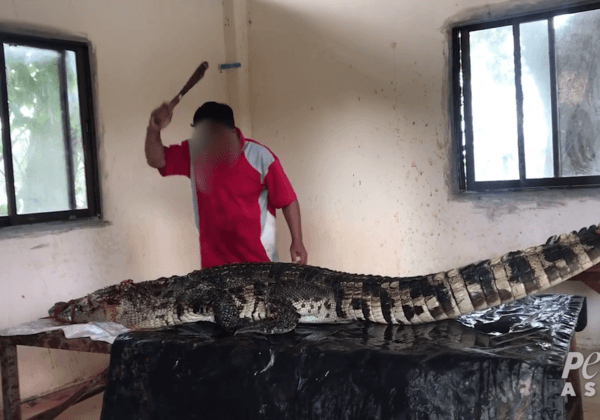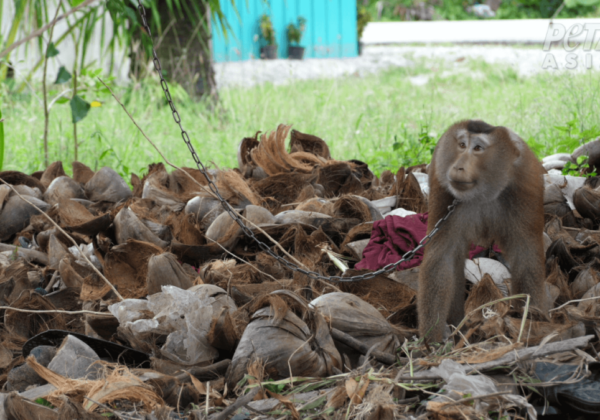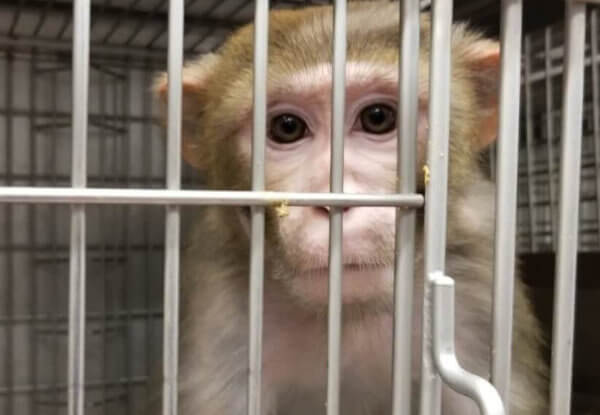The PETA Patter of Tiny Feet
 There are few people in this world who don’t think that at least some animals are lovable and worth protecting. There are perhaps even fewer people who think that all animals are lovable and worth protecting! If you are one of the few who believes that every life is valuable and deserving of our love and protection, then PETA salutes you—the lovers of the squirmers, the slitherers, the eight-legged, the four-eyed, and the miniscule.
There are few people in this world who don’t think that at least some animals are lovable and worth protecting. There are perhaps even fewer people who think that all animals are lovable and worth protecting! If you are one of the few who believes that every life is valuable and deserving of our love and protection, then PETA salutes you—the lovers of the squirmers, the slitherers, the eight-legged, the four-eyed, and the miniscule.
In reality, the way that we make our decisions about all animals (both human and nonhuman) relies heavily on looks, and we often choose to treat animals according to the way that their appearance makes us feel. We are more inclined to “like” an animal if he or she fits a certain image that we have in our head of what qualifies as “cute.” This applies to my friend, who only dates 6-foot-tall boys with brown hair, as much as it does to me, who resists the impulse to run away screaming from the teeny, tiny pattering feet of the harmless spider making the long journey across my bedroom floor.
There really is no logic behind either one of these impulses. My friend is no more likely to find everlasting joy and happiness with a man who has brown hair than with a man who has black hair. And the teeny, tiny spider is no more likely to cause me any harm than the “cute” puppy I rescued from an animal shelter is.
This theory also works in reverse. A wonderful blond-haired man will be just as devastated by my friend’s rejection as a wonderful brown-haired man would be. And the teeny, tiny spider will suffer if I cruelly crush him under my heel, just as the “cute” puppy would if I did the same to him.
I will always remember as a child trying to kill a large, harmless harvest spider with insect killer. With the first spray, the spider slowed down and began moving erratically, so I sprayed him again, and he flipped onto his back and writhed in agony, pumping his legs in the air in a desperate bid to keep running and escape the torture. Even then, I was still too scared of this helpless creature to get close enough to end what I had begun—so instead, I watched as he struggled and slowly faded away over the next half-hour.
I learned from this that all animals feel pain and have the capacity to suffer—but there is a second, harder lesson to learn. Even at a very young age, I would never have dreamed of slaughtering a fluffy bunny rabbit if he or she were intruding in my house, but because this spider was small and “ugly,” I felt I had the right to do whatever I wanted to him. These perceptions often allow people to justify behavior that in reality, we know is wrong.
We can all admit to having superficial ideas about certain things. But it is worth taking the time to look at the perceptions we have and think about whether they are actually valuable or worthless and harmful.
All animals, both human and nonhuman, deserve to live their lives free from suffering and exploitation. So speak up for the little guy, the underdog, the one without the obvious “cute” factor—because while we may not be able to save every animal, each one we save values his or her life.
Posted by Claire Fryer









